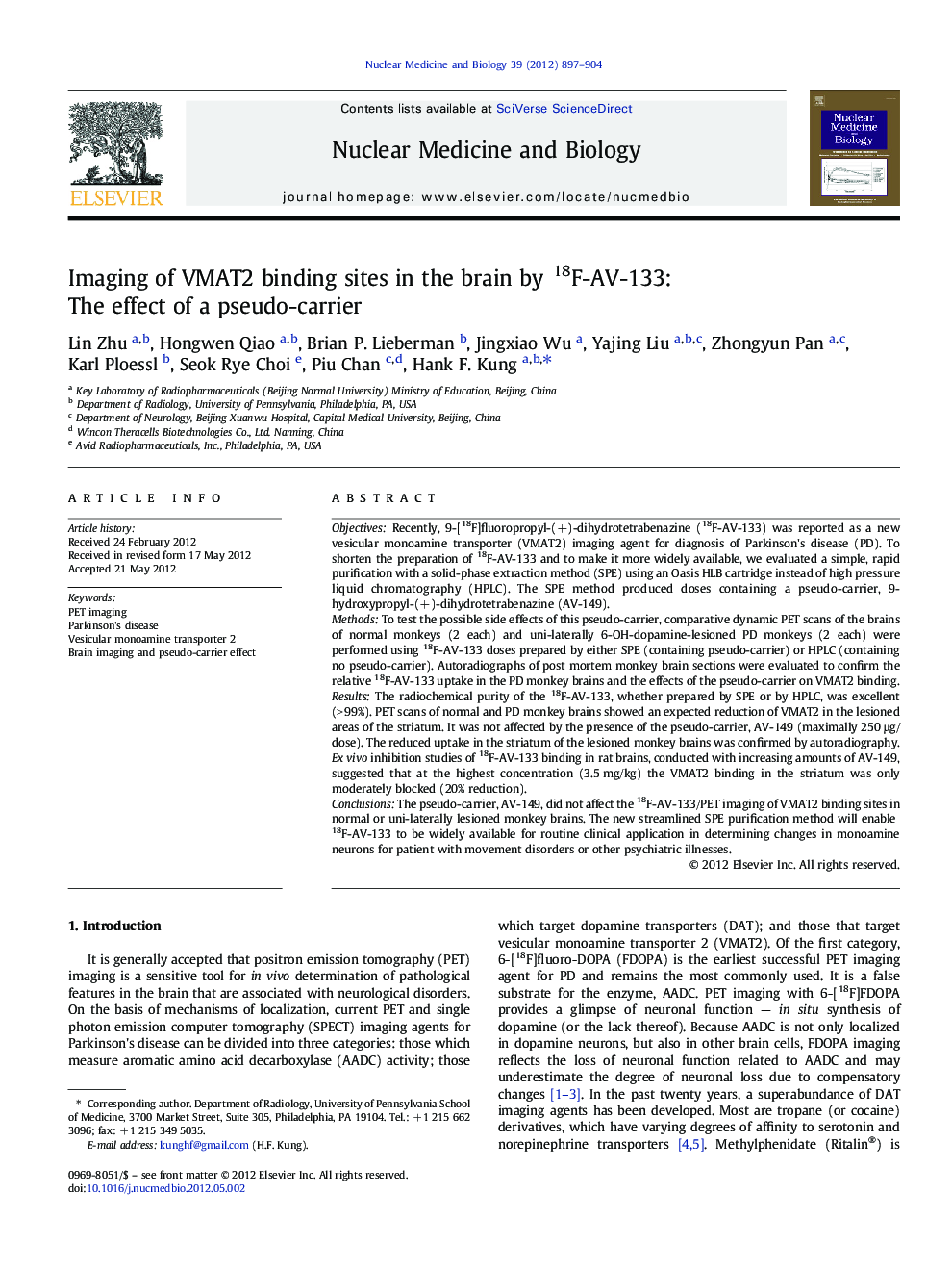| Article ID | Journal | Published Year | Pages | File Type |
|---|---|---|---|---|
| 2153863 | Nuclear Medicine and Biology | 2012 | 8 Pages |
ObjectivesRecently, 9-[18F]fluoropropyl-(+)-dihydrotetrabenazine (18F-AV-133) was reported as a new vesicular monoamine transporter (VMAT2) imaging agent for diagnosis of Parkinson's disease (PD). To shorten the preparation of 18F-AV-133 and to make it more widely available, we evaluated a simple, rapid purification with a solid-phase extraction method (SPE) using an Oasis HLB cartridge instead of high pressure liquid chromatography (HPLC). The SPE method produced doses containing a pseudo-carrier, 9-hydroxypropyl-(+)-dihydrotetrabenazine (AV-149).MethodsTo test the possible side effects of this pseudo-carrier, comparative dynamic PET scans of the brains of normal monkeys (2 each) and uni-laterally 6-OH-dopamine-lesioned PD monkeys (2 each) were performed using 18F-AV-133 doses prepared by either SPE (containing pseudo-carrier) or HPLC (containing no pseudo-carrier). Autoradiographs of post mortem monkey brain sections were evaluated to confirm the relative 18F-AV-133 uptake in the PD monkey brains and the effects of the pseudo-carrier on VMAT2 binding.ResultsThe radiochemical purity of the 18F-AV-133, whether prepared by SPE or by HPLC, was excellent (> 99%). PET scans of normal and PD monkey brains showed an expected reduction of VMAT2 in the lesioned areas of the striatum. It was not affected by the presence of the pseudo-carrier, AV-149 (maximally 250 μg/dose). The reduced uptake in the striatum of the lesioned monkey brains was confirmed by autoradiography. Ex vivo inhibition studies of 18F-AV-133 binding in rat brains, conducted with increasing amounts of AV-149, suggested that at the highest concentration (3.5 mg/kg) the VMAT2 binding in the striatum was only moderately blocked (20% reduction).ConclusionsThe pseudo-carrier, AV-149, did not affect the 18F-AV-133/PET imaging of VMAT2 binding sites in normal or uni-laterally lesioned monkey brains. The new streamlined SPE purification method will enable 18F-AV-133 to be widely available for routine clinical application in determining changes in monoamine neurons for patient with movement disorders or other psychiatric illnesses.
